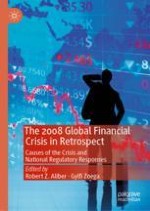2019 | OriginalPaper | Buchkapitel
18. Iceland Should Replace Its Central Bank with a Currency Board
verfasst von : Fredrik N. G. Andersson, Lars Jonung
Erschienen in: The 2008 Global Financial Crisis in Retrospect
Aktivieren Sie unsere intelligente Suche, um passende Fachinhalte oder Patente zu finden.
Wählen Sie Textabschnitte aus um mit Künstlicher Intelligenz passenden Patente zu finden. powered by
Markieren Sie Textabschnitte, um KI-gestützt weitere passende Inhalte zu finden. powered by
